The silvery foliage and white flowers of bush morning glory (
Convolvulus cneorum)
make it is easy to see the benefits of adding it to the landscape. Not to be confused with invasive bindweed
(Convolvulus arvensis), which has a similar flower, bush morning glory has a silvery-gray foliage that adds a visually cooling element that contrasts nicely with darker greens, and pinkish buds greet the morning by revealing lovely white flowers with small yellow centers. As the name suggests, bush morning glory’s flowers last through the day and close at night until morning arrives again.
But this evergreen ground cover has more to offer than just beautiful color; it is also drought tolerant and thrives in areas with hot, reflected heat. Bush morning glory thrives in climates similar to that of its native Mediterranean habitat, where dry, well-drained soils and sporadic rainfall are the norm. While this plant may look somewhat delicate, don’t let its appearance fool you — it does very well in arid climates, including that of desert landscapes.
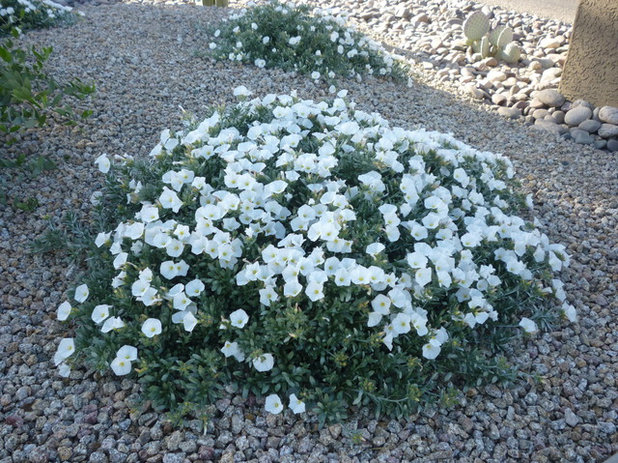
MTH Design Group
Botanical name: Convolvulus cneorumCommon names: Bush morning glory, silver bush
Origin: Native to the Mediterranean regions of Western and Southern Europe
Where it will grow: Hardy to 10 degrees Fahrenheit (USDA zone 8; find your zone)
Water requirement: Drought tolerant once established, but does best when watered weekly in summer, twice a month in spring and fall, and monthly in winter; it grows best in well-drained, slightly alkaline soils
Light requirement: Full sun is best but can tolerate light shade
Mature size: 2 feet tall and 4 feet wide
Benefits and tolerances: Drought tolerant; attracts butterflies
When to plant: Spring or fall
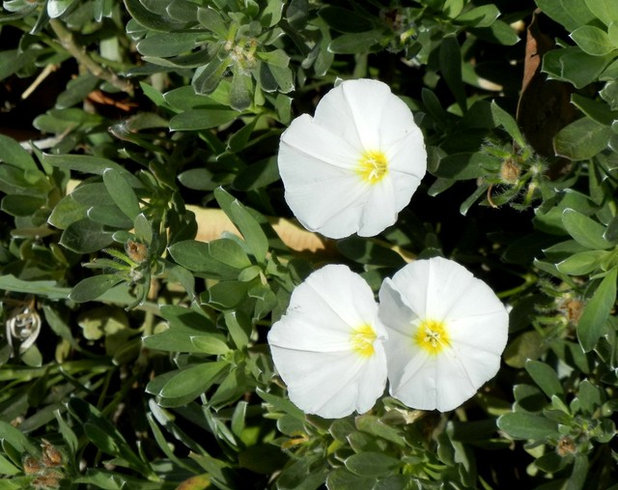
Noelle Johnson Landscape Consulting
Distinguishing traits. This silvery ground cover transforms in spring with the arrival of light pink buds that contrast beautifully with the foliage. They burst open with the coming of day, revealing bright white petals that almost completely hide the foliage underneath. As evening approaches, the flowers close until the next day.
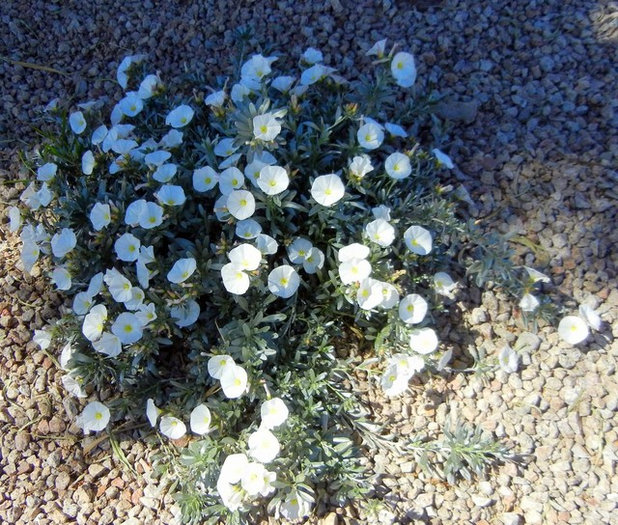
Noelle Johnson Landscape Consulting
The flowers typically herald the arrival of spring and will continue blooming through the summer into early fall in mild Mediterranean climates. In desert climates the flowering period is somewhat shorter but no less impressive, with the flowers appearing in spring only.
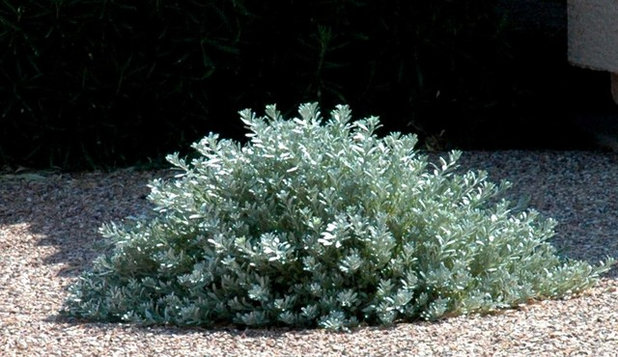
Noelle Johnson Landscape Consulting
Even when the plant is not in flower, the evergreen, silvery-gray foliage adds interest. Tiny hairs cover the leaves, giving them their silvery appearance and soft feel. The plant gradually spreads out to 4 feet.
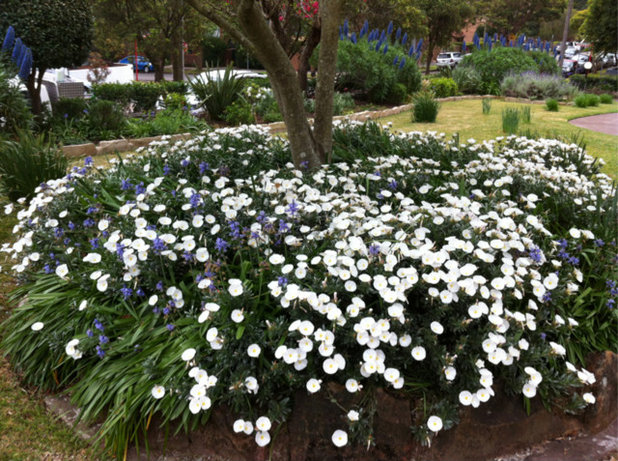
Garden Estate Landscaping
How to use it. Plant bush morning glory in areas that you frequent in the morning, where you can enjoy the glow from the silvery foliage and white flowers. The relative short stature of this plant, along with its spreading growth habit, makes it suitable for planting under trees that provide light shade. Because of its affinity for well-drained soils, it also does well in raised beds and containers. This plant can handle the heat while still looking great, so consider it for areas around your patio, courtyard or pool that receive hot, reflected sun.
The silvery foliage makes bush morning glory the perfect partner for plants with darker foliage, such as autumn sage (
Salvia greggii), Cleveland sage (
Salvia clevelandii),
‘Little John’ bottlebrush (
Callistemon viminalis ‘Little John’), firecracker penstemon (
Penstemon eatonii)
and
Goodding’s verbena (
Glandularia gooddingii).
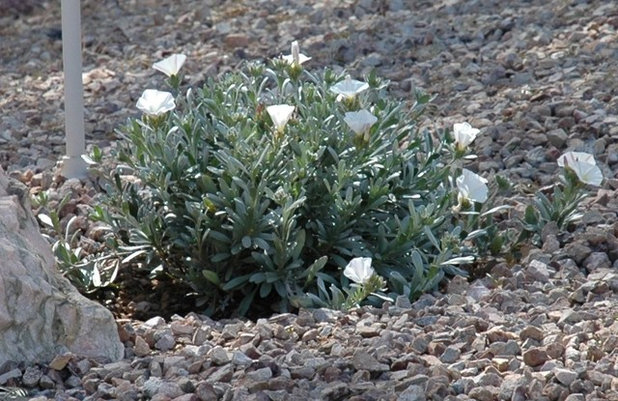
Noelle Johnson Landscape Consulting
Planting notes. Plant it in well-drained soil and full to filtered sun. This plant does not tolerate wet soil well and also prefers slightly alkaline soils, which are more prevalent throughout the western United States. If drainage is a problem, amend the soil with compost or plant bush morning glory in a container or on a mound where excess water can drain away.
Bush morning glory requires little maintenance but does benefit from pruning back by at least one half its size every year or two in midwinter to keep it from becoming leggy and to stimulate new growth.
More: See more white flowers





